
MSP For Dummies
Published by: John Wiley & Sons, Ltd., The Atrium, Southern Gate, Chichester, www.wiley.com
This edition first published 2014
2014 John Wiley & Sons, Ltd, Chichester, West Sussex.
Registered office
John Wiley & Sons Ltd, The Atrium, Southern Gate, Chichester, West Sussex, PO19 8SQ, United Kingdom
For details of our global editorial offices, for customer services and for information about how to apply for permission to reuse the copyright material in this book please see our website at www.wiley.com .
The right of the author to be identified as the author of this work has been asserted in accordance with the Copyright, Designs and Patents Act 1988.
All rights reserved. No part of this publication may be reproduced, stored in a retrieval system, or transmitted, in any form or by any means, electronic, mechanical, photocopying, recording or otherwise, except as permitted by the UK Copyright, Designs and Patents Act 1988, without the prior permission of the publisher.
Wiley publishes in a variety of print and electronic formats and by print-on-demand. Some material included with standard print versions of this book may not be included in e-books or in print-on-demand. If this book refers to media such as a CD or DVD that is not included in the version you purchased, you may download this material at http://booksupport.wiley.com . For more information about Wiley products, visit www.wiley.com .
Designations used by companies to distinguish their products are often claimed as trademarks. All brand names and product names used in this book are trade names, service marks, trademarks or registered trademarks of their respective owners. The publisher is not associated with any product or vendor mentioned in this book.
MSP is a registered trade mark of AXELOS Limited
The Swirl logo is a trade mark of AXELOS Limited
PRINCE2 is a registered trade mark of AXELOS Limited
LIMIT OF LIABILITY/DISCLAIMER OF WARRANTY: WHILE THE PUBLISHER AND AUTHOR HAVE USED THEIR BEST EFFORTS IN PREPARING THIS BOOK, THEY MAKE NO REPRESENTATIONS OR WARRANTIES WITH THE RESPECT TO THE ACCURACY OR COMPLETENESS OF THE CONTENTS OF THIS BOOK AND SPECIFICALLY DISCLAIM ANY IMPLIED WARRANTIES OF MERCHANTABILITY OR FITNESS FOR A PARTICULAR PURPOSE. IT IS SOLD ON THE UNDERSTANDING THAT THE PUBLISHER IS NOT ENGAGED IN RENDERING PROFESSIONAL SERVICES AND NEITHER THE PUBLISHER NOR THE AUTHOR SHALL BE LIABLE FOR DAMAGES ARISING HEREFROM. IF PROFESSIONAL ADVICE OR OTHER EXPERT ASSISTANCE IS REQUIRED, THE SERVICES OF A COMPETENT PROFESSIONAL SHOULD BE SOUGHT.
For general information on our other products and services, please contact our Customer Care Department within the U.S. at 877-762-2974, outside the U.S. at (001) 317-572-3993, or fax 317-572-4002.
For technical support, please visit www.wiley.com/techsupport .
A catalogue record for this book is available from the British Library.
ISBN 978-1-118-74640-0 (pbk), ISBN 978-1-118-74637-0 (ebk), ISBN 978-1-118-74638-7 (ebk)
Printed in Great Britain by TJ International Ltd, Padstow, Cornwall
10 9 8 7 6 5 4 3 2 1
Chapter 1
Introducing Programme Management: Projects, Programmes and MSP
In This Chapter
 Thinking about the differences between projects and programmes
Thinking about the differences between projects and programmes
 Discovering the key programme management terms
Discovering the key programme management terms
 Uncovering the structure of MSP
Uncovering the structure of MSP
The term programme can have lots of different meanings in business and within organizations. Perhaps you think of a programme as a schedule in the heart of a project. Be careful if that's what your colleagues think they may consider Managing Successful Programmes (MSP) a scheduling tool! Or it can mean a set of projects, which is fine because you can use parts of MSP successfully to look after such a set. Let's call that multi-project management.
In this chapter, I explore the nature of programme management. I look at projects and programmes, building on the idea of a project to introduce the concept of a programme. I also share with you a few terms used frequently in programme management, to help you develop that all-important common vocabulary, and I have a quick look at the programme management structure as it's used in MSP.
 If you already have a fair amount of programme experience and are reading MSP For Dummies to discover additional details of good practice in managing transformational change programmes, by all means skim rapidly through this chapter.
If you already have a fair amount of programme experience and are reading MSP For Dummies to discover additional details of good practice in managing transformational change programmes, by all means skim rapidly through this chapter.
But more than likely you're newly arrived at the programme management station and want to orientate yourself. Well if any of the following applies to you, you're in the right place:
- Your project is getting a little complicated and someone at work mentions programme management (perhaps at the coffee machine while you're waiting for a so-called espresso that in fact looks more like washing-up water when it's dispensed).
- You're looking after a number of projects and really want to tie them together a little more tightly (as much as you really want a caffeine boost right now).
- You know that your business has to change and your gut feeling is that putting a few people to one side to deliver a technical solution from a project isn't going to suffice (just like that machine-produced cup of joe won't do).
Understanding Projects and Programmes
Whatever your level of programme management experience, no doubt you already have some ideas on the following:
- What a project is
- What a programme is
- What the difference is between a project and a programme
As you read through this book, I share some new ideas with you, and so I want you to be clear in your own mind about genuinely new ideas or ones you have some previous experience of.
 Start by folding a piece of paper in half. Label one half project and the other half programme. Then write down a characteristic of a project and the equivalent characteristic of a programme. Repeat this exercise until you've identified six to twelve sets of characteristics.
Start by folding a piece of paper in half. Label one half project and the other half programme. Then write down a characteristic of a project and the equivalent characteristic of a programme. Repeat this exercise until you've identified six to twelve sets of characteristics.
Take your time with this important exercise; perhaps leave the list on your bedside table.I bet you wake up in the middle of the night (especially if you read the list before trying to sleep) and think of another pair of characteristics.
 Whatever you write on your comparison list is fine; this is your starting point, so there are no wrong answers.
Whatever you write on your comparison list is fine; this is your starting point, so there are no wrong answers.
Getting a group on the same programme page
If you're already working on a potential programme with a group of colleagues, run through this exercise with them. Get each person to write down their views on the characteristics of projects and programmes and then combine the lists. You then understand both the group's view of the differences between project and programmes as well as each person's opinion.
Don't send me your lists (please don't!). I've done this exercise with thousands of people all over the world, so I'm getting pretty good at guessing what gets written on these pieces of paper.
Checking on the characteristics of projects

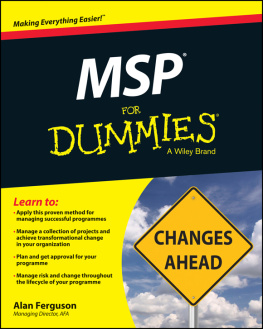


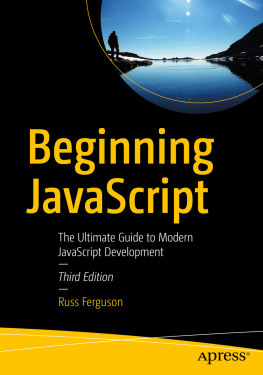



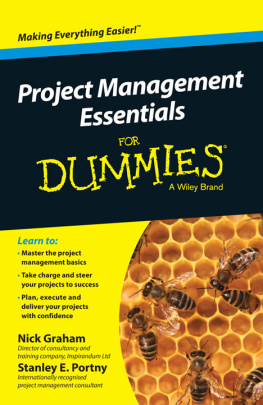
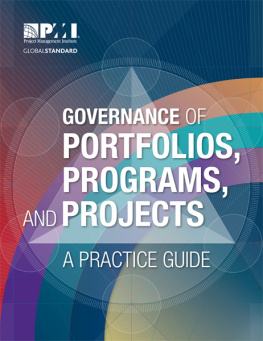
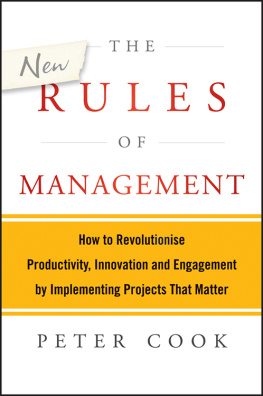
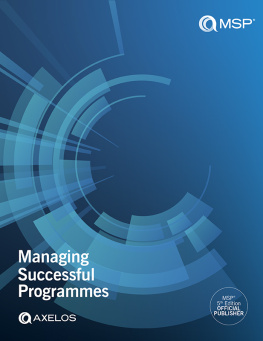
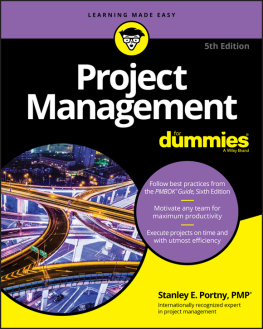


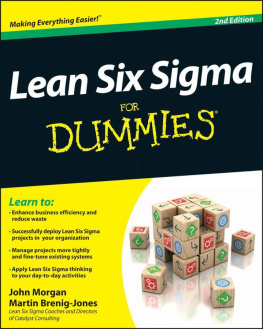
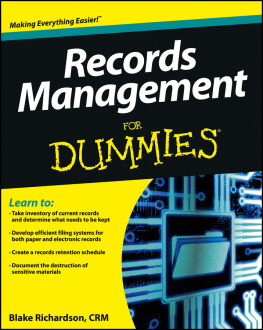

 Thinking about the differences between projects and programmes
Thinking about the differences between projects and programmes If you already have a fair amount of programme experience and are reading MSP For Dummies to discover additional details of good practice in managing transformational change programmes, by all means skim rapidly through this chapter.
If you already have a fair amount of programme experience and are reading MSP For Dummies to discover additional details of good practice in managing transformational change programmes, by all means skim rapidly through this chapter. Start by folding a piece of paper in half. Label one half project and the other half programme. Then write down a characteristic of a project and the equivalent characteristic of a programme. Repeat this exercise until you've identified six to twelve sets of characteristics.
Start by folding a piece of paper in half. Label one half project and the other half programme. Then write down a characteristic of a project and the equivalent characteristic of a programme. Repeat this exercise until you've identified six to twelve sets of characteristics. Whatever you write on your comparison list is fine; this is your starting point, so there are no wrong answers.
Whatever you write on your comparison list is fine; this is your starting point, so there are no wrong answers.